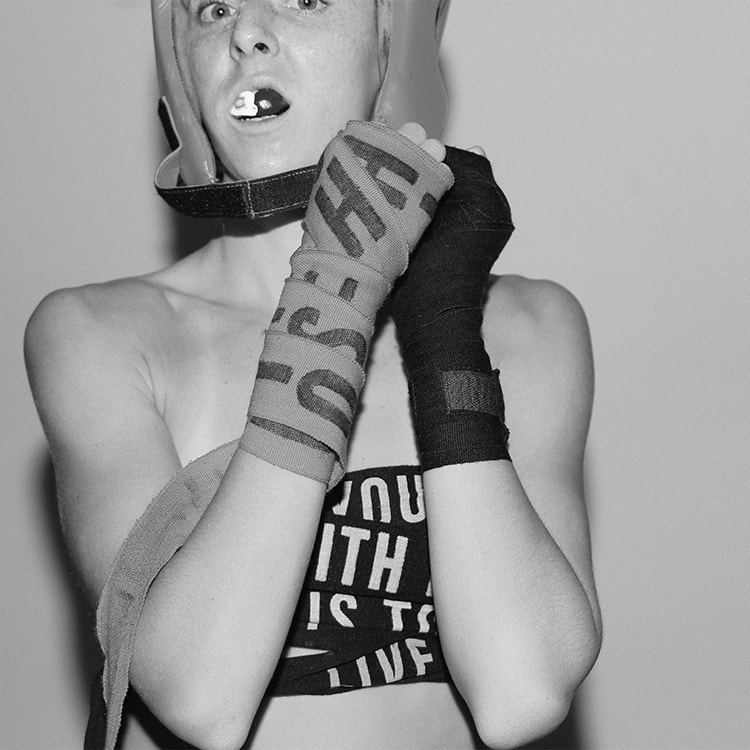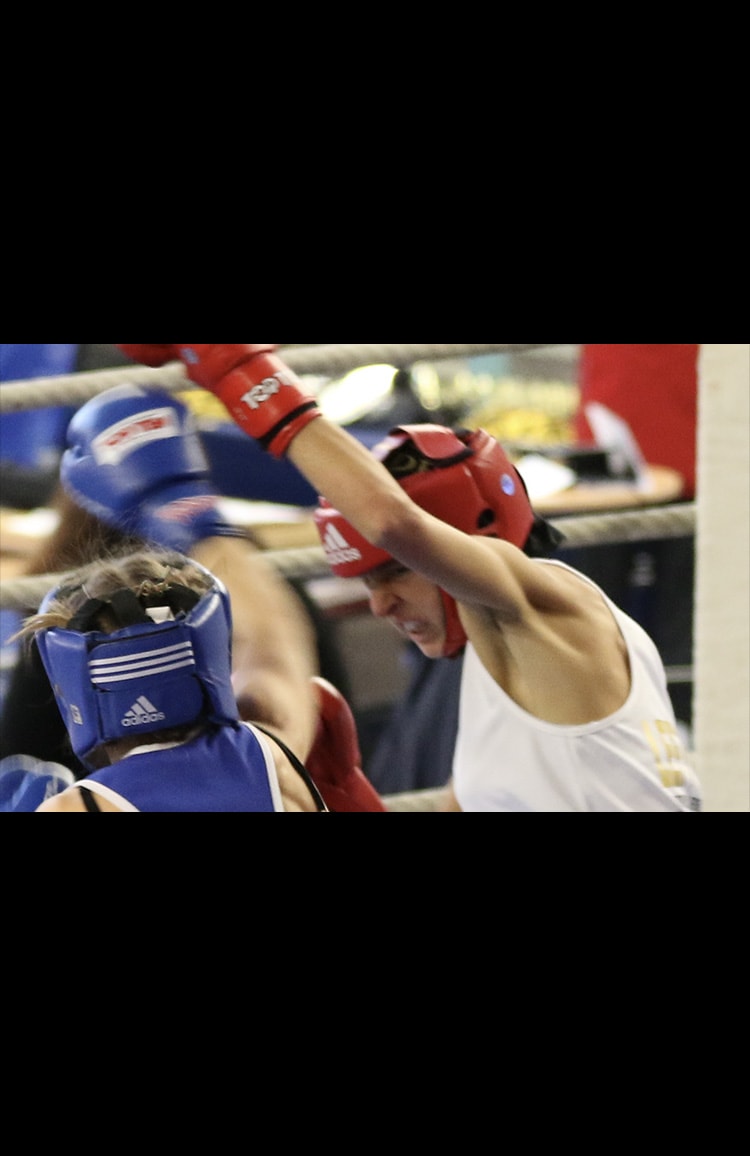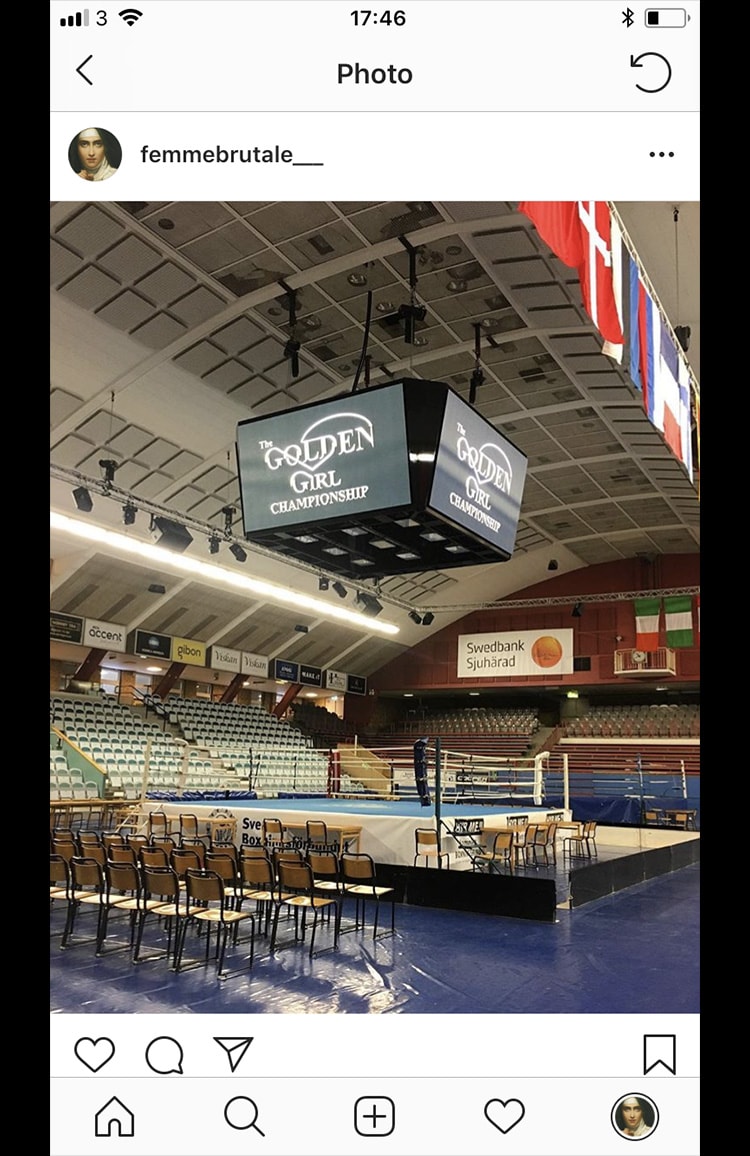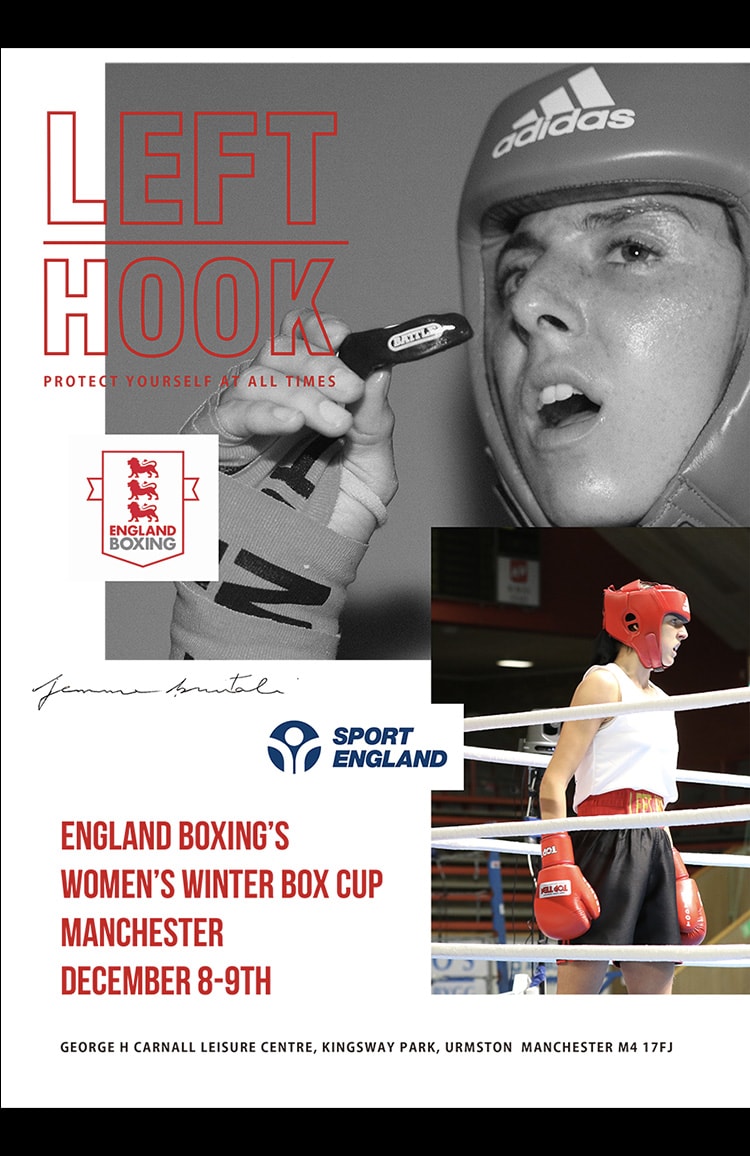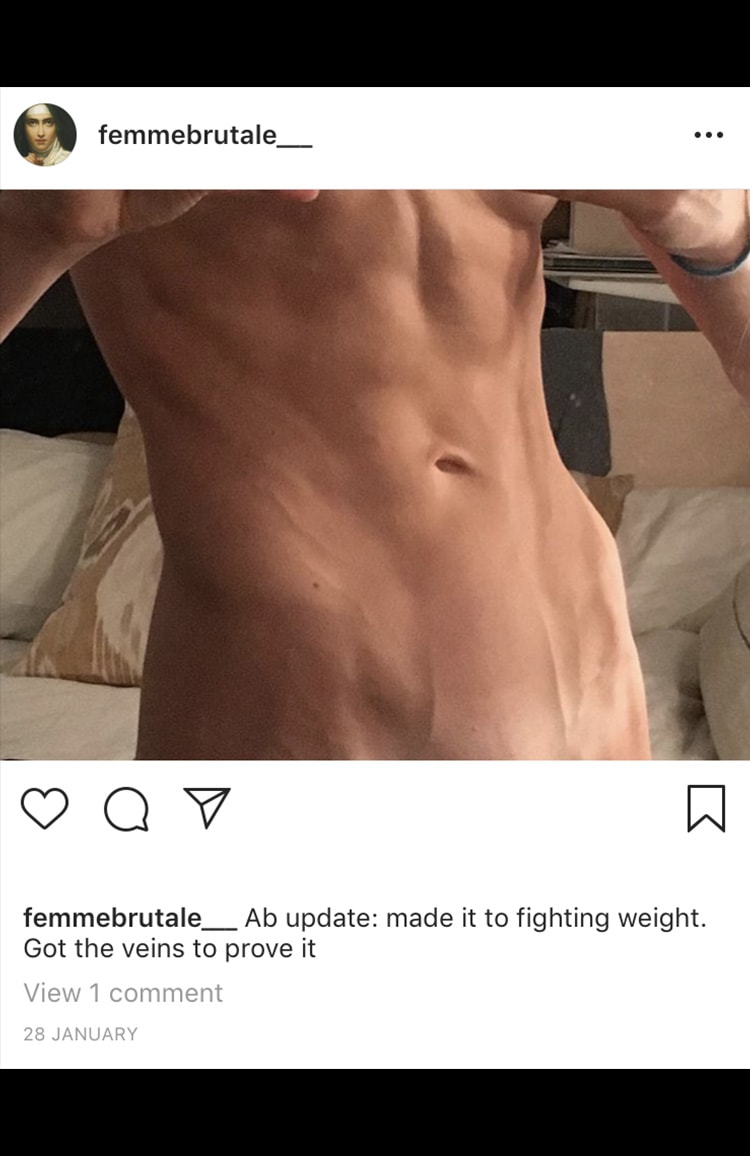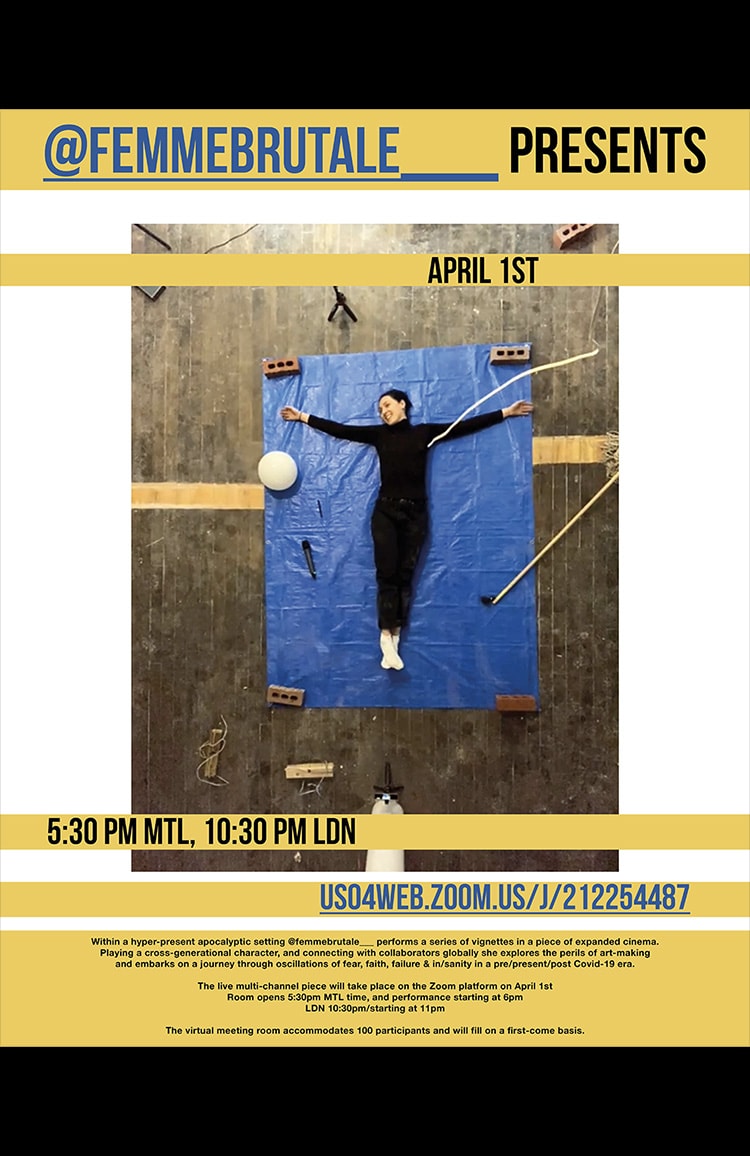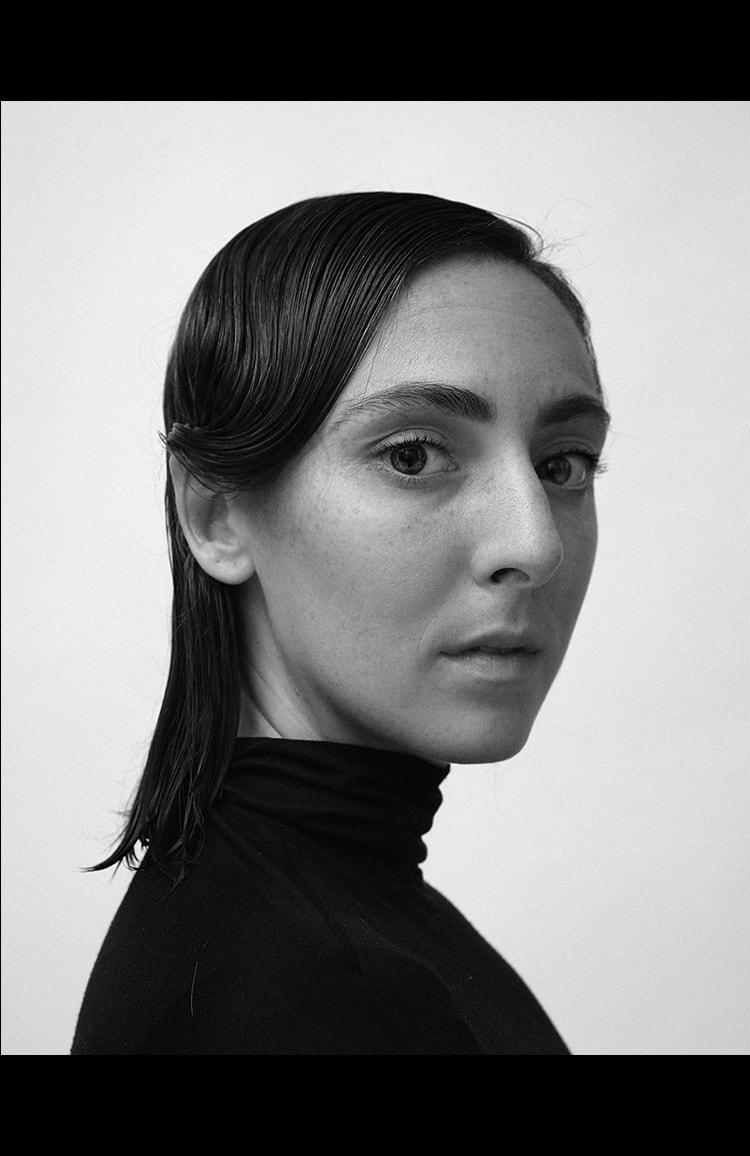CG__Something I have noticed in your work is that there is an awareness of the body as a force field. I was wondering what you have learned from being in the ring?
CP__Entering the ring has helped me lose my illusion of the ‘self’ as a separate entity. In boxing you become acutely aware that, in order to be able to fight, you need an untenable presence in the moment. There are no illusions there as the self needs to be integrated. I guess boxing is a way for me to touch reality. Some things become simpler in the ring, I can think ’these hands are real, that punch was real.’
CG__That sense of illusion versus reality makes me think about how you translated your experience of boxing into a form of performance art. There is a constant challenge between fiction and documentary in how you chose to capture Femme Brutale and her experiences of winning three championships. It seemed to move from a process of self-fictioning into something that became almost too real, because she reached such a point of success that boxing could have become a career. Suddenly you were no longer ‘performing’ boxing, you were becoming legitimated as a boxer. Yet through tracking her movements on Instagram, a platform you use to archive her history, Femme Brutale seems to pull back from fully pursuing that potential ‘career’ route. What do you think about that as a reading of the work?
CP__Absolutely. It was a mindfuck. I don’t think I have ever exercised as much artistic intention as I did through Femme Brutale. I knew what I was doing from the beginning, I had articulated to myself that this is what my year was going to be about, while also feeling that I had accidentally tripped over a threshold. So by the time I had been able to conceive and articulate what I was going to do, or what I was doing, it was already too late. There was a fall because, unknowingly, Femme Brutale acquainted me with the shadow parts of my self. I didn’t know what I was getting myself into. I was left wondering: ‘was that me or was that something else?’ But it was so real. It stemmed from a real need for transformation and change. She came out of me.
CG__What have you been working on most recently?
CP__I’m currently collaborating with Adam Basanta, a Montreal-based artist. We’ve carried over the media architecture of my initial performance and have created a 24 hour live stream. We’ll be working through improvisation and immediacy, exploring art making as theatre and storytelling, and experimenting with ongoing acts of sculpture and performance. I’ll be performing excerpts from my moving-image piece and developing it in tandem as we go along. You can log on at https://espacebrutale.live/in-formation
Apart from that, Last year, with a grant from the Canadian government, I began developing a three-part film work. This work takes the form of a series of concentric circles: ‘Desire,’ ‘Nostalgia’ and ‘Vision.’ I examine ‘Desire’ through boxing, in which I am exploring the concept of the ‘shot' as a precise form of touch that is present in both film and boxing. In ‘Nostalgia’ I explore family history. These two emotional strands of ‘Desire’ and ‘Nostalgia’ then lead to ‘Vision,’ which I am in the process of articulating through a series of workshops, collaborating with acting coaches, choreographers, and other creatives. Part of it entails embodying my paternal grandmother, who I’ve never met, and enacting scenes from her personal history. To do this I’m pulling information from a 1950’s magazine cover and interview she features in.
In order to prepare for the role I wanted to explore alternative means to boxing of physicalising imagination and speech. Through research, I found the Suzuki method of acting, developed by the Japanese theatre director, philosopher and writer Tadashi Suzuki, which is a rigorous training technique for stage actors involving stomping, footwork, squatting, making statues with your body and voice-work. It’s a way of finding and moving from your centre, preparing the body for speech and training the body to generate and hold images.
I am combining this with another actor-training method called ‘Crosspoints’ to step into character creation perhaps even more consciously than I had through boxing.
CG__There is a strong relationship in your work between photography as a document of ‘fact’ and as a process of self-exploration and renewal. How do you see the photos, films and installation works functioning in relation to your performance work? How did you observe your body and its capacities change through the making of these records?
CP__It’s a process of witnessing, journalling, documenting. It’s also part of the device of observing and actualising simultaneously. I found myself creating and performing images that foreshadowed what would take place. The videos I made of my abs, as well as the black-and-white performance images were a sort of quantum form of signalling from the past to the future. They’re humorous because I was enacting something fictional, but it passed through to reality - it really worked!
There is definitely a collapse between the image and the image-maker. You fall into this cycle of prosumerism where you are at once producing and being produced by the image. I am not sure it’s particularly healthy but it links to my exploration of drive and desire. How do we break out of this cycle? This is what the third instalment and concentric circle of the film, ‘Vision,’ is going to explore.

